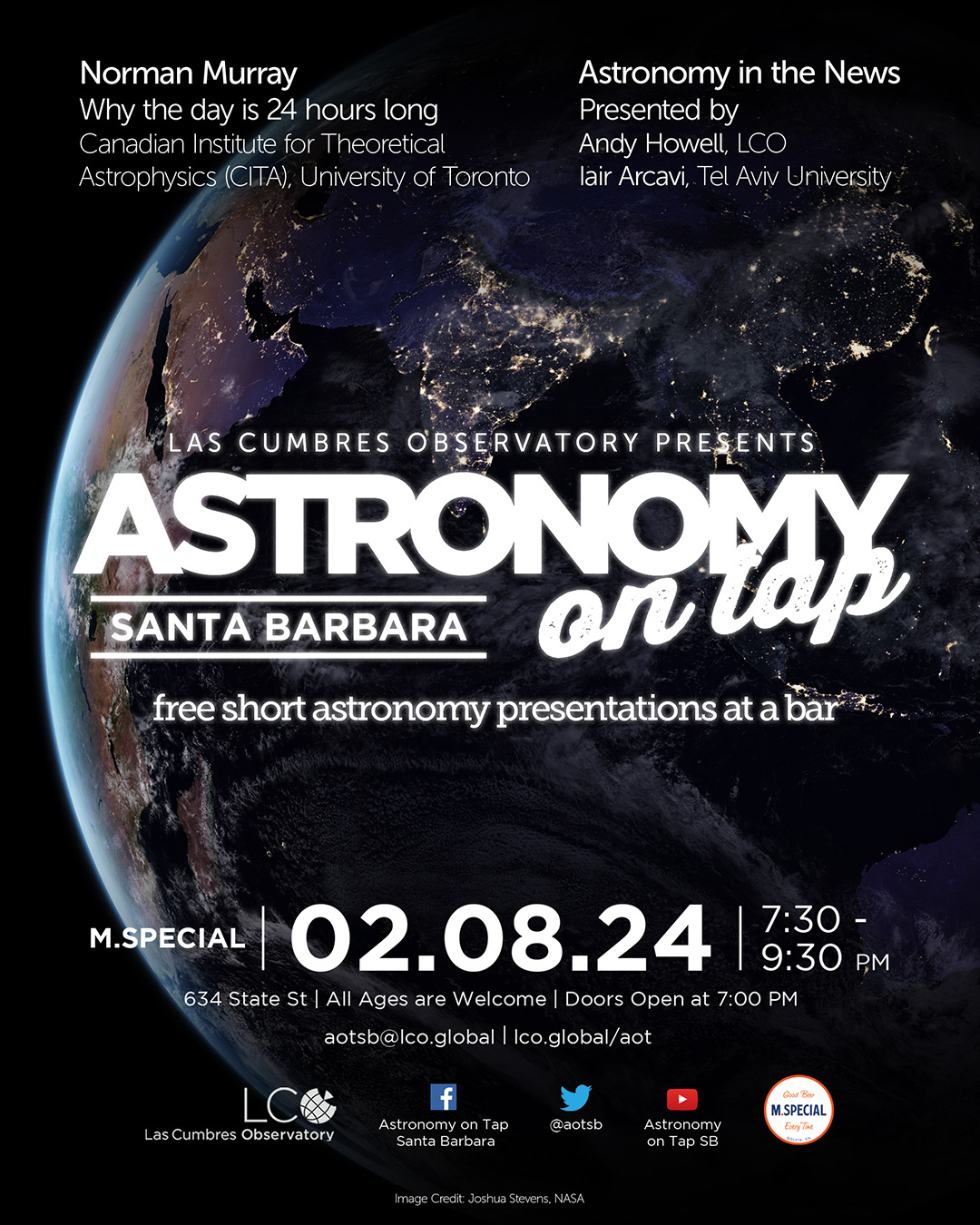Astronomy on Tap at M. Special
**Events may have been canceled or postponed. Please contact the venue to confirm the event.
Date & Time
Thu, Feb 08 7:30 PM - 9:30 PM
Address (map)
634 State Street
Venue (website)
M. Special Brewing Co.
A free, short, astronomy presentation at a bar.
Why the day is 24 hours long
Norman Murray , , Canadian Institute for Theoretical Astrophysics (CITA), University of Toronto
The length of the day and the month are seen to be increasing, due to gravitational tidal torques. Geologic data suggests, however, that between about 2,000 million years ago (Ma) and 1,000 Ma, the length of day (LOD) was fixed at about 19.5 hours, while the length of the month was increasing. The fixed LOD may result from the Solar thermal atmospheric tide, which was stronger in the past, due in part to a resonance in Earth’s atmosphere. Absent this resonance, the LOD today would be around 60 hours, if in fact the thermal tide was effective. A similarly strong thermal tide has been measured by weather stations on Mars, and by satellites orbiting Venus. Thermal tides are likely to have affected the length of day of many exoplanets.

